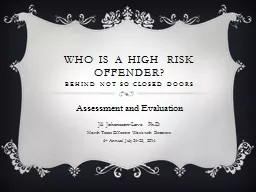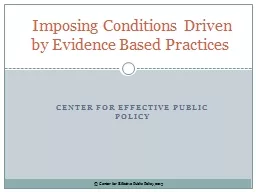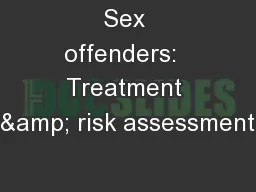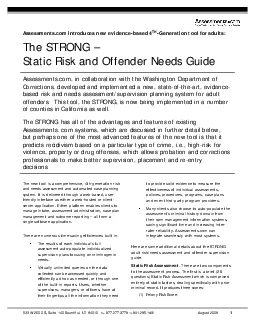PPT-Who is a high risk offender?
Author : faustina-dinatale | Published Date : 2016-11-13
Behind not so closed doors Assessment and Evaluation Jill JohanssonLove PhD North Texas Effective Work with Batterers 6 th Annual July 2425 2014 Why do we care
Presentation Embed Code
Download Presentation
Download Presentation The PPT/PDF document "Who is a high risk offender?" is the property of its rightful owner. Permission is granted to download and print the materials on this website for personal, non-commercial use only, and to display it on your personal computer provided you do not modify the materials and that you retain all copyright notices contained in the materials. By downloading content from our website, you accept the terms of this agreement.
Who is a high risk offender?: Transcript
Download Rules Of Document
"Who is a high risk offender?"The content belongs to its owner. You may download and print it for personal use, without modification, and keep all copyright notices. By downloading, you agree to these terms.
Related Documents














